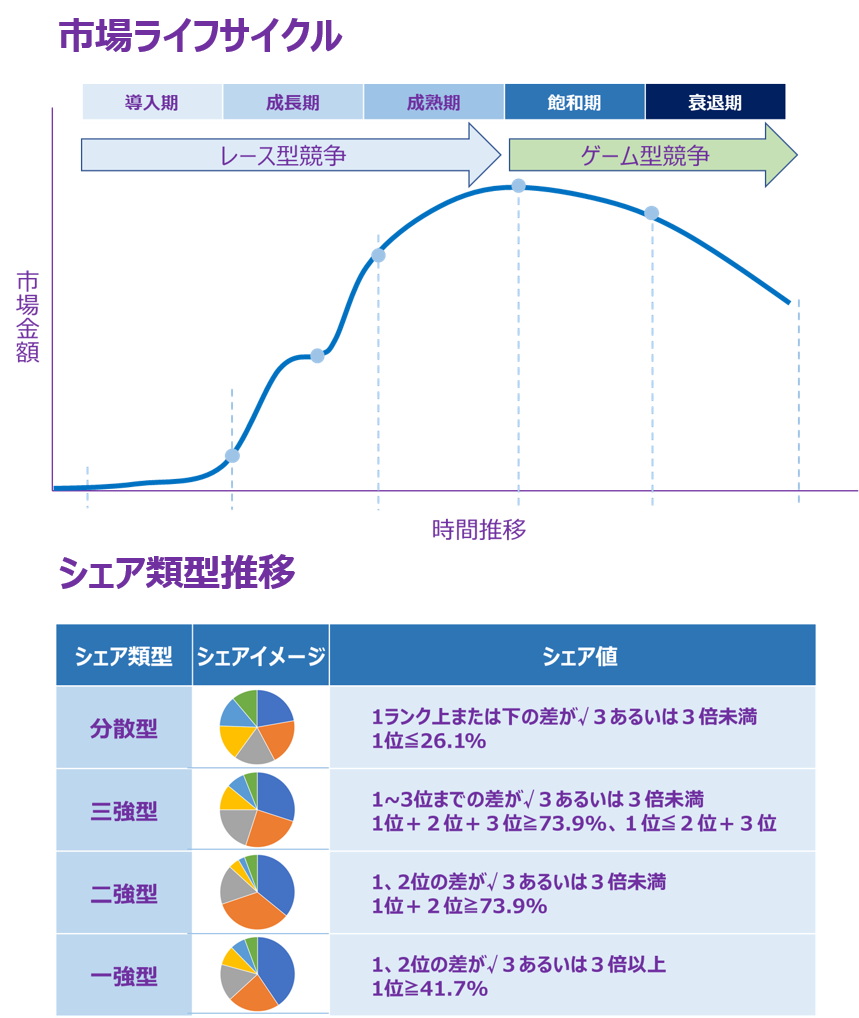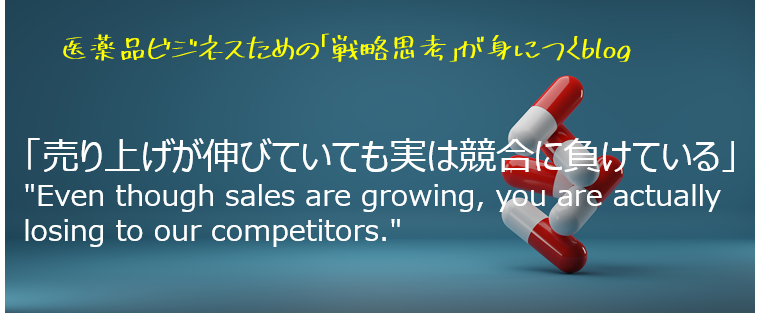
市場のライフサイクルにおいて、最も楽に売上を伸ばせる時期は成長期から成熟期にかけてです。
この時期であれば、市場に参入した全ての製品が売上を伸ばすことが出来ます。
業界や市場によって異なりますが、一般的には市場が成熟している場合には市場内強者が高い割合を獲得する傾向があります。
シェア類型の推移においても市場ライフサイクルが進むにつれて、分散型市場から3強型、2強型、そして最終的には1強型競争市場を形成すると言われています。
競争環境は外部環境要因の影響を常に受けています。
競合の影響を考慮しなければ、売り上げが伸びていても実際には競合に負けており、近い将来に競争から脱落する可能性があります。
マトリクス分析法は外部環境要因と内部環境要因を定量化および可視化することが出来ます。
“Even though sales are growing, you are actually losing to our competitors.”
In the lifecycle of a market, the easiest period to increase sales is from the growth phase to the maturity phase.
During this period, all products entering the market have the potential to increase their sales.
While it may vary depending on the industry or market, generally, in a mature market, market leaders tend to acquire a large share.
In terms of the evolution of market share types, it is said that as the market lifecycle progresses, it transitions from a fragmented market to a three-strong market, then a two-strong market, and ultimately forms a one-strong competitive market.
The competitive environment is constantly influenced by external factors.
Without considering the impact of competitors, even if sales are growing, in reality, you may be losing to your competitors and have the potential to be eliminated from the competition in the near future.
Matrix analysis can quantify and visualize both external and internal environmental factors.

